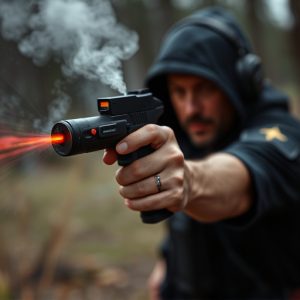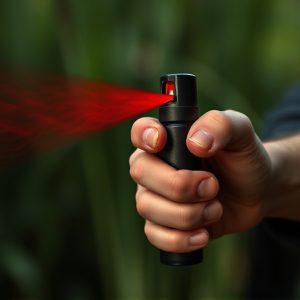Riot Control Agents: Types, Storage, and Legal Use of Pepper Spray
Maintaining optimal best storage temperature (50-70°F/10-21°C) for pepper spray is crucial t…….
Maintaining optimal best storage temperature (50-70°F/10-21°C) for pepper spray is crucial to preserve its effectiveness and potency, as extreme temperatures can degrade active ingredients. Law enforcement agencies must adhere to strict guidelines, including proper storage in cool, dry places away from direct sunlight and moisture, keeping containers tightly closed, and regular inventory management, to ensure the reliability of their riot control tools while minimizing risks to public safety and equipment integrity. Non-compliance with legal frameworks and best practices can lead to civil liabilities and disciplinary actions.
Riot control agents, such as pepper spray, are essential tools for law enforcement managing civil unrest. This article delves into the world of these powerful substances, exploring their types and impact on crowd control. We dissect critical storage considerations, emphasizing the best storage temperature for pepper spray to maintain effectiveness and safety. Furthermore, we navigate the legal landscape, highlighting regulations and best practices governing their use by law enforcement agencies. Understanding these aspects is crucial for responsible and effective riot management.
- Understanding Riot Control Agents: Types and Their Impact
- Storage Considerations: Ensuring Effectiveness and Safety of Pepper Spray
- Legal Aspects: Regulations and Best Practices for Law Enforcement Use
Understanding Riot Control Agents: Types and Their Impact
Riot control agents, often referred to as pepper spray, are chemicals designed to disrupt and disperse crowds during law enforcement operations. These agents create a temporary but intense irritation, enabling officers to gain control and maintain order in chaotic situations. The most common types include oleoresin capsicum (OC) spray, which derives from chili peppers, and various aerosol irritants containing chloroacetic acid or ammonia.
Knowing the best storage temperature for pepper spray is crucial. OC spray, for instance, should be stored between 50-70°F (10-21°C) to maintain its effectiveness. Extreme temperatures can degrade the active ingredients, reducing the agent’s potency. Proper storage ensures that riot control officers have access to reliable tools when needed, maximizing their impact during riots or high-tension incidents while minimizing potential risks to public safety and the integrity of the equipment.
Storage Considerations: Ensuring Effectiveness and Safety of Pepper Spray
The effectiveness and safety of pepper spray, a common riot control agent, heavily rely on proper storage practices. One of the critical factors to consider is temperature. The best storage temperature for pepper spray is between 50°F and 70°F (10°C to 21°C). Extreme temperatures can cause the spray’s chemical composition to degrade, reducing its potency. Prolonged exposure to heat or cold may even make it useless.
Furthermore, storing pepper spray in a cool, dry place is essential to prevent damage. Direct sunlight and moisture should be avoided as they can accelerate degradation. It’s also crucial to keep the containers tightly closed when not in use to protect the spray from dust and potential contamination. Ensuring these conditions will help maintain the integrity of the pepper spray, ensuring its readiness for law enforcement purposes.
Legal Aspects: Regulations and Best Practices for Law Enforcement Use
The legal landscape surrounding riot control agents, such as pepper spray, is a complex web of federal and local regulations designed to balance public safety with individual rights. Law enforcement agencies must adhere to strict guidelines when deploying these substances, ensuring they use them only as a last resort and in accordance with their intended purpose. One critical aspect is understanding the best storage temperature for pepper spray, which varies among brands but generally requires cool, dry conditions to maintain effectiveness.
Agencies are responsible for proper handling, storage, and inventory management of riot control agents. This includes regular maintenance checks, secure storage facilities, and training officers on safe usage practices. Failure to comply with these best practices can result in legal repercussions, including civil liabilities and disciplinary actions against the department. Additionally, some regions have specific laws governing the types of agents that can be used, their concentration levels, and the circumstances under which they can be deployed, further emphasizing the need for law enforcement to stay informed about local and national regulations.
Riot control agents, such as pepper spray, are powerful tools for law enforcement but their effective and safe use requires a comprehensive understanding of agent types, storage considerations, and legal regulations. By adhering to best practices, including maintaining the optimal best storage temperature for pepper spray (typically below 70°F or 21°C), law enforcement agencies can ensure these agents remain potent and safe for use when needed. Regular training and compliance with guidelines are essential to balance public safety with responsible usage of these crucial tools.


